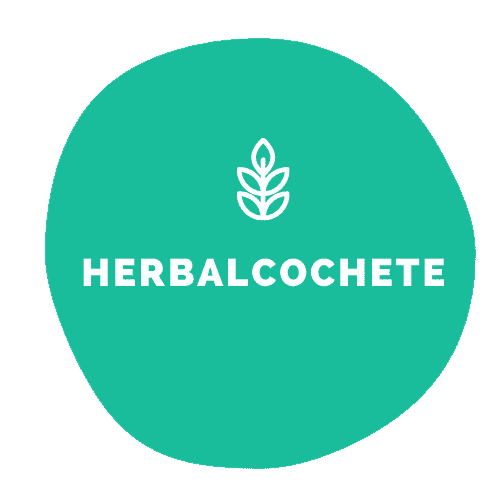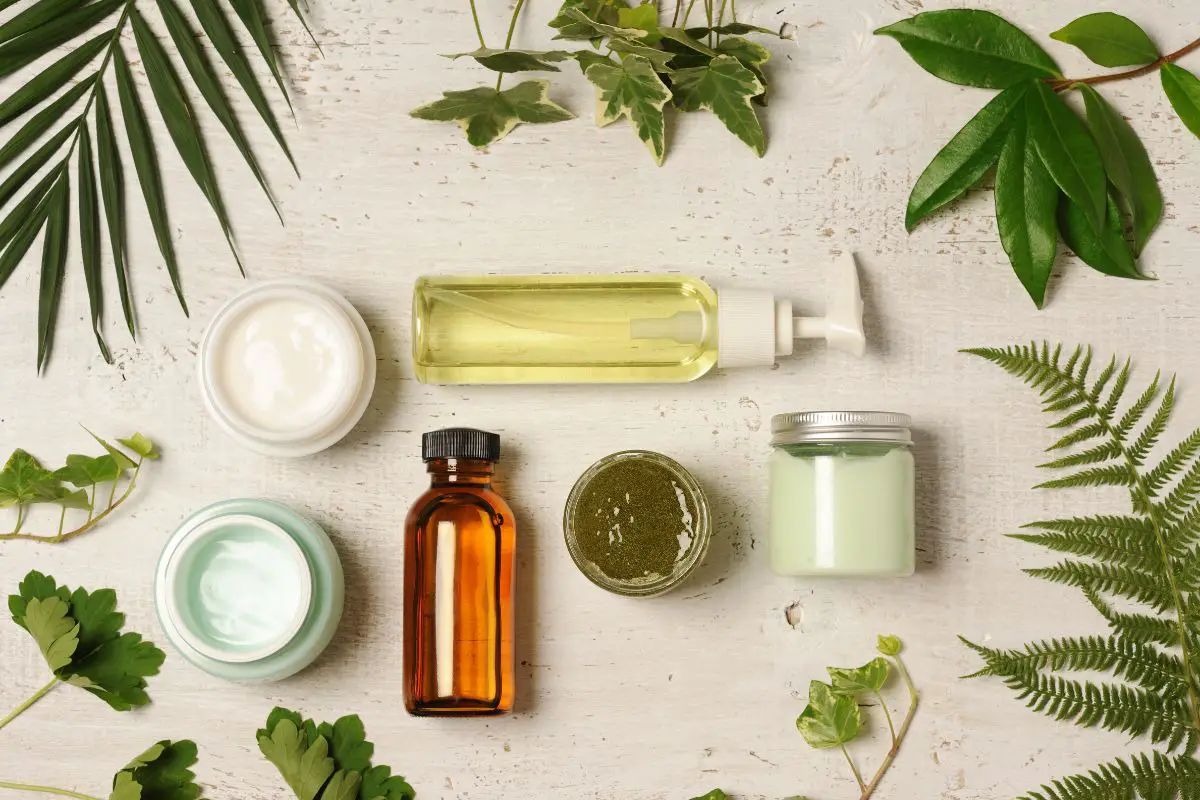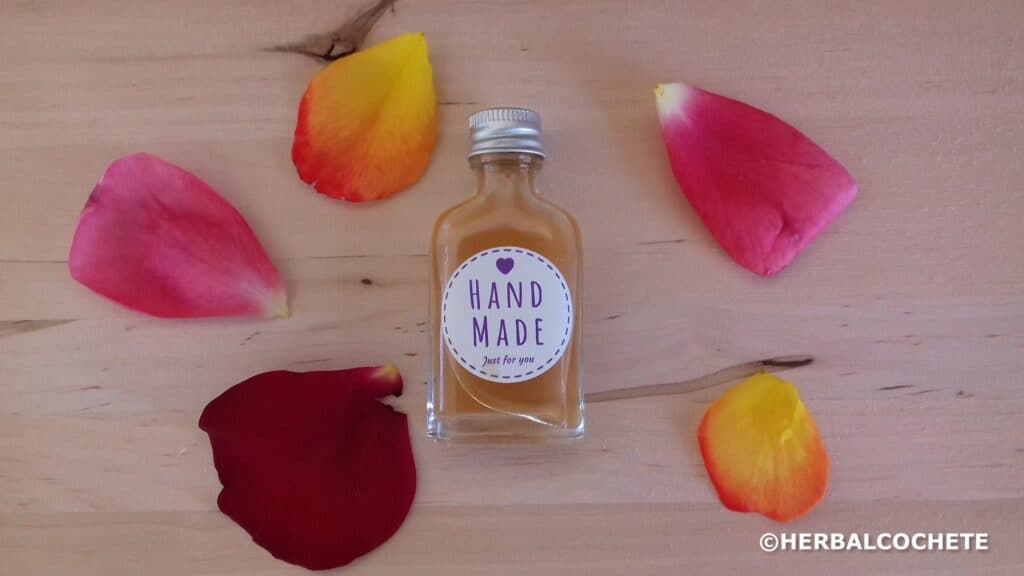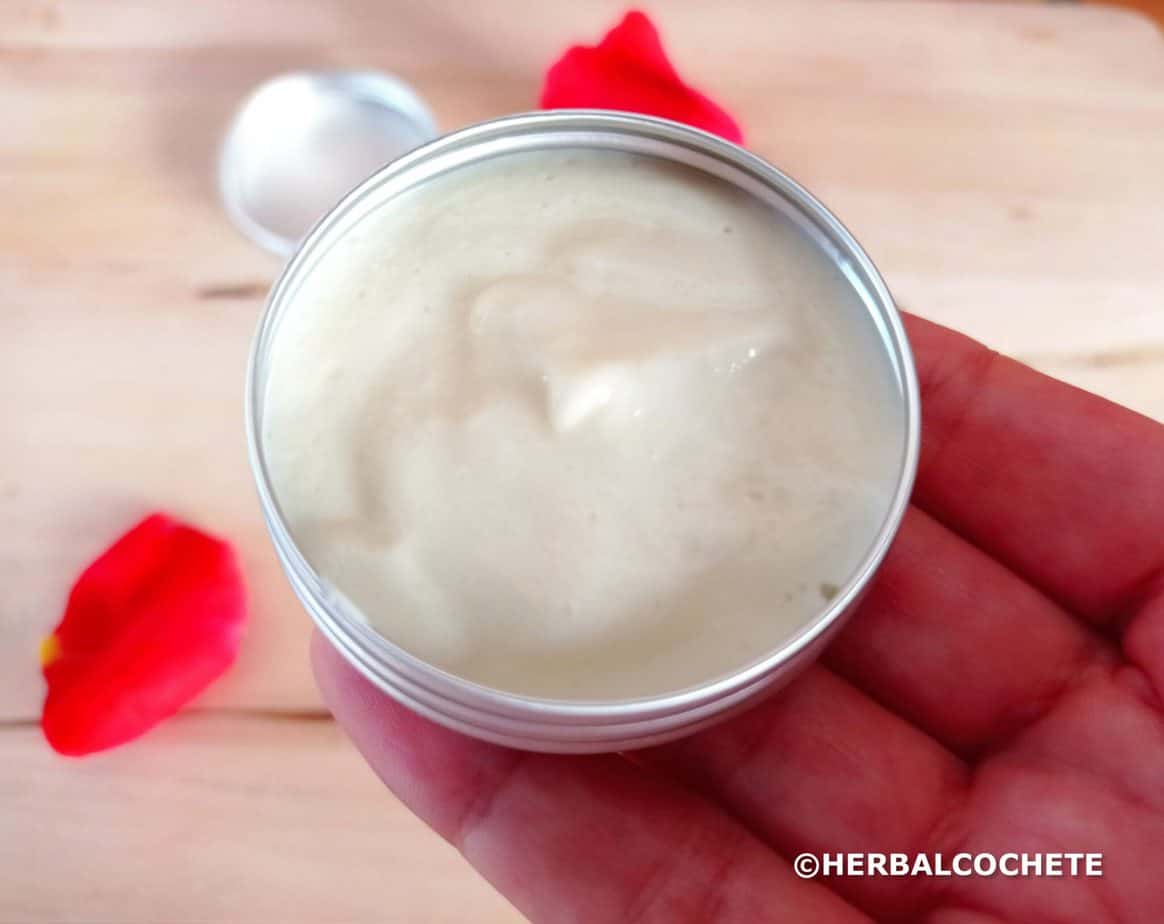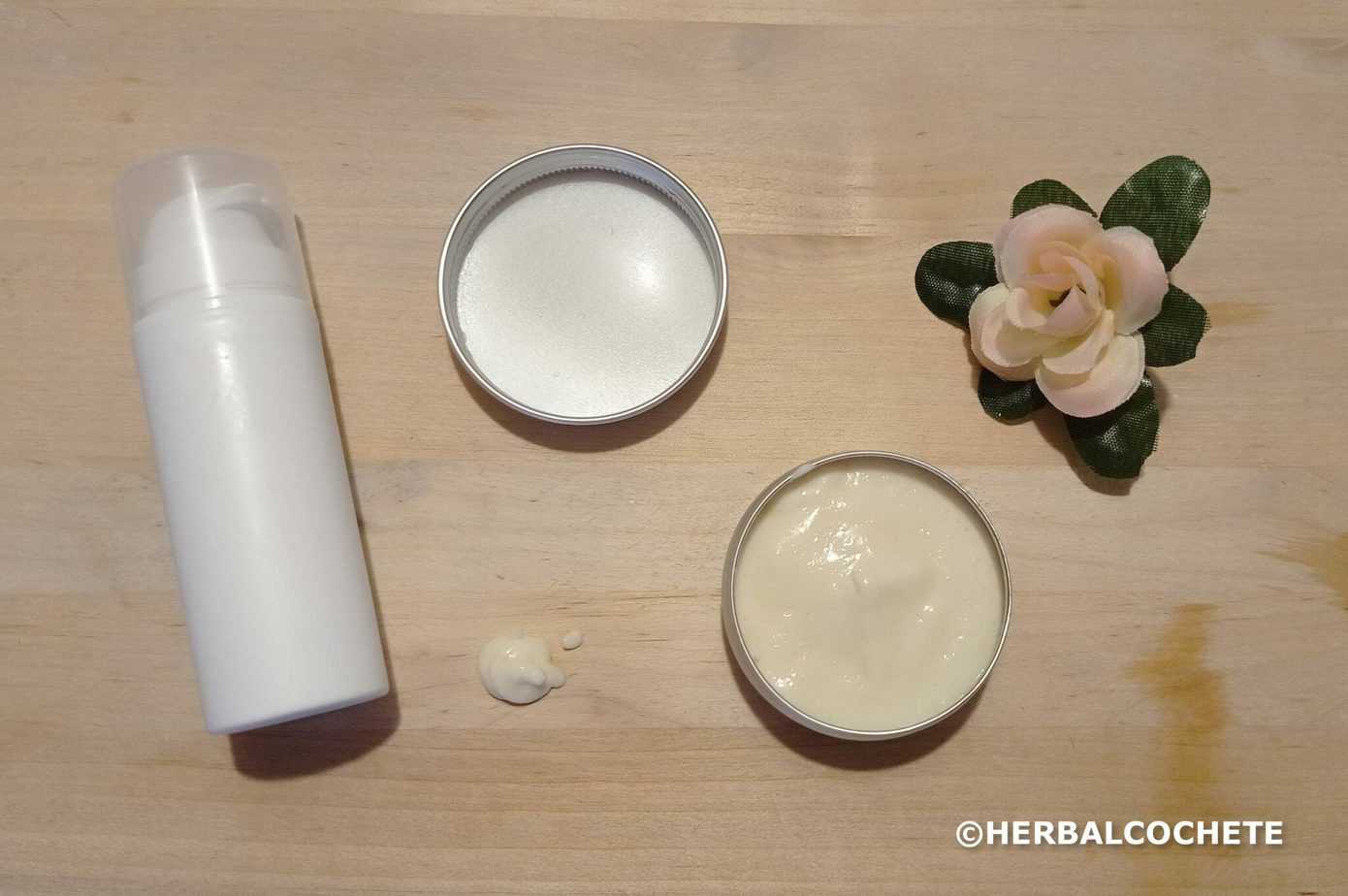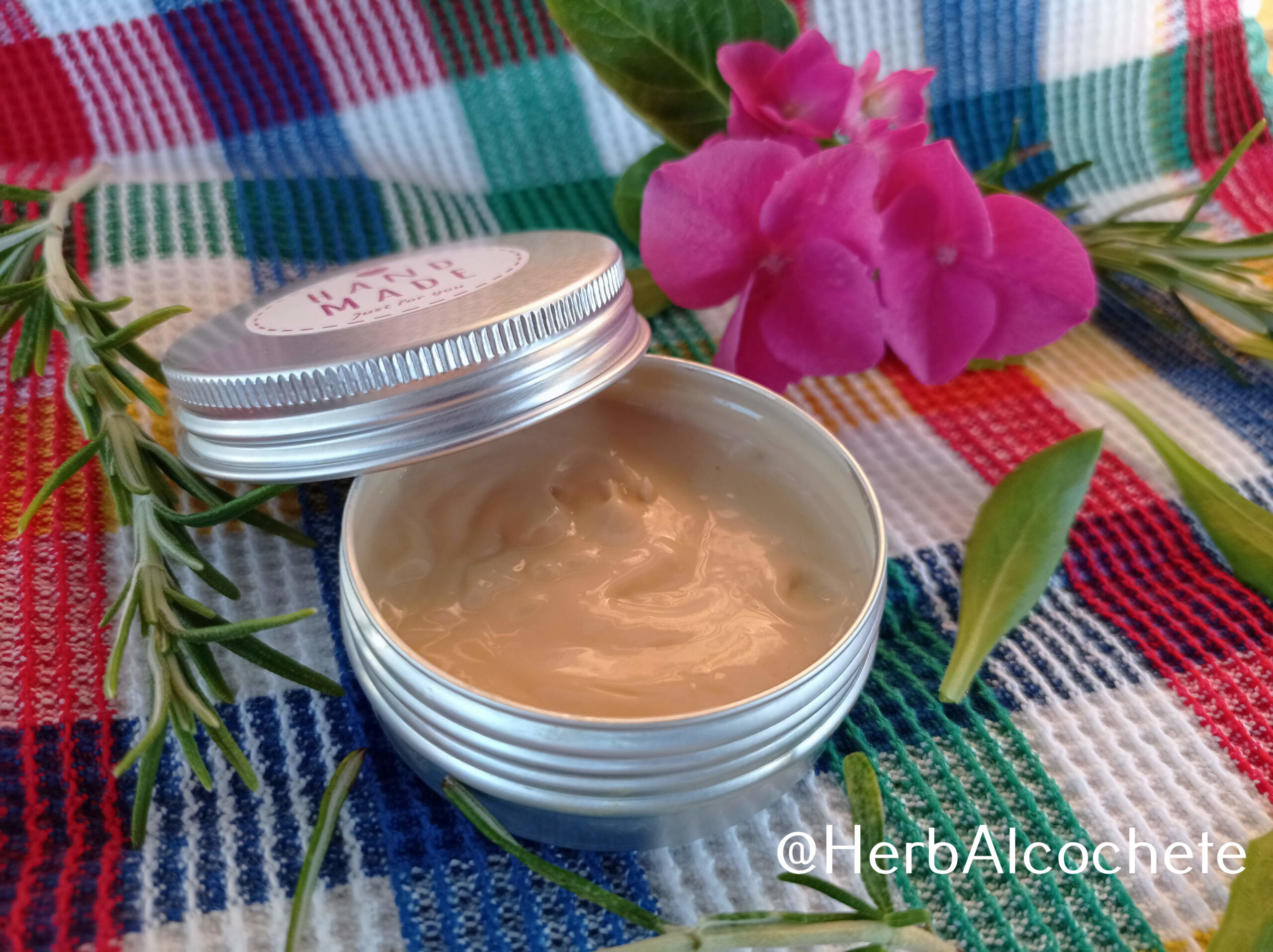Learn how to make a face lotion at home and try one of these four face lotion recipes presented in this post: one simple face lotion recipe for most skin types, two anti-aging face lotion recipes for mature skin and one oat face lotion recipe for sensitive skin.
We have all bought and used face lotions or creams throughout our lives. What we haven’t done or even considered it, was to make them at home! It’s so simple it hurts! This was one of the things that really surprise me when I was learning to make natural skincare products.
A face lotion doesn’t need to be expensive. It’s actually quite cheap, especially if you wish to skip the fragrances and just make an “unscented” or naturally scented product. Can you believe in a natural and effective face lotion for less than 2$ (or 1€)? It’s not science fiction. It’s just a matter of knowing of what is it made of and give it a try at home. The process is actually very simple.
Table of Contents
- How Do You Make Homemade Face Lotion?
- How Do You Make Your Own Face Lotion: Adapting To Your Skin Type
- What Ingredients Help With Wrinkles?
- What Ingredients Make a Skin Moisturizer?
- Related Posts
- Watch This Video Before Starting Your Recipe
- Simple Natural Face Lotion Recipe
- Simple Anti-Aging Face Lotion Recipe
- Wrinkle Face Lotion Recipe With CoQ10
- Oat Face Lotion Recipe
- Find Where To Buy Natural Face Lotions
How Do You Make Homemade Face Lotion?
Lotions are emulsions made of 75%-80% of water and 25%-20% of oils. Yes, you’re read it right: most lotions you buy are 70% to 80% made of water. Creams are not much different. You’re bying water at gold price.
Emulsifying Wax
As water and oil don’t mix, an emulsifying ingredient in required. This ingredient is usually an emulsifying wax, like emulsifying wax NF, or BTMS. Beeswax is not an emulsifiying wax. I have to be honest here, I didn’t have time to test a lot of emulsifying waxes. I’ve used Polawax NF with good results and didn’t bother to change it, as I am satisfied with it. I’ve also gave a try at BTMS with good results. I now use the latest simply from economic reasons. I use it for my hair conditioner anyway, and instead of managing the logistics of two products (“best by” dates) I only have to deal with one.
Some recipes show a mechanical way to emulsify the oil and water. Mix both with a immersion blender and you will get a cream. The problem is that, after some days, even some hours, they separate, because they are not truly emulsified. I never had oil-water separation when using an emulsifying wax, apart from some mistakes I’ve made.
Preservative
Water is a good environmental medium for bacteria and fungus growth. Especially if we use an herbal infused water, rich in nutrients as it is the case of many natural lotions. Therefore, a broad spectrum preservative is required. This is mandatory to make your natural face lotion safe.
Please read this article and avoid recipes with water/aloe vera content without any broad spectrum preservative. As a side note, vitamin E oil, grapefruit seed extract or rosemary oleorresin extract are all anti-oxidants and not broad spectrum preservatives.
Additional ingredients are also used in lotions such as plant extracts, vitamin E oil (working as an anti-oxidant for the oils), and essential oils, as natural aroma fragrances. We will go in detail through some of them in the next chapters.
Read everything in detail about this and more in How To Make An Emulsion For Skincare.
Pro Tips
As long as you respect the quantities of oil, water, essential oils and emulsifying wax, you can customize this recipe according to your needs:
- Replace the oils in the recipe by another oil or oils, but I’d advise to not use any solid oils
- Use herbal-infused oils: check out how to make them in How to Make Infused Oil With Dried Herbs.
- Use herbal water infusion (chamomille, green tea, rose water toner)
- Apply just one essential oil, or an entirely different blend, but make sure to run a skin test or that the blend is known to you, as some essential oils are skin irritants. You can also skip them entirely
An exception to respecting quantities: the amount of emulsifying wax you use. The amount in the recipes below is defined to be a bit thick for lotion, it will look more like a cream. I am on the “safe” side because I don’t want your first lotion to be a dissapointment, with water or oil separation. However, the perfect consistency requires a bit of trial and error; and it might be different for me and for you.
If you wish to make any of these lotions more regularly, you can decrease or increase the emulsifying wax 1g and see if you prefer the new texture. Be informed that at 4%, the lotion might have some of the water separating. Make notes of your own experiments, noting the quantities and how the lotion changed – and if you like it or not.
And if it separates? The looks might not be good, but you don’t need to throw all away. Remove the excess of liquid and use it as is. What changed was just the water-to-oil ratio.
How Do You Make Your Own Face Lotion: Adapting To Your Skin Type
About the lotion recipes below, I consider them to be good for most skin types. Most have a focus on mature skin and anti-aging properties, from which all skin types may take benefit.
Dry skin might need some more powerful moisturizers. But I would advise to increase first the oil content against water content, up to 40%. Only go for creams if your skin still doesn’t get enough moisture.
With oily skin, I would do exactly the opposite: decrease the oil quantity and increase the water one. However, I have combination skin and have been using these lotions for more than two years by now. My skin was never again as oily as it was before with commercial face creams. The lotions are milder, with much less drying ingredients and richer in essential nutrients. They respec and help your skin with sebum balance.
For sensitive skin or skin with conditions I am more conservative and careful. Consult a doctor to know which ingredients you can use. The oat face lotion recipe is probably the most adequate, but make a skin test first. I am not a health specialist, just an amateur skin care formulator. My skin is healthy and I never had problems, but that doesn’t mean the lotions are all safe for sensitive skin. I can only tell they are less aggressive than most store-bought lotions, including pharmacy ones. Why? Check the ingredients list for each one.
Don’t forget to make notes of your own experiments, noting the quantities and how the lotion changed – and if you like it or not.
What Ingredients Help With Wrinkles?
According to several sources, ingredients that are rich in these substances are the best at helping preventing aging skin signals, such as wrinkles, dry skin, spots, and lack of elasticity (check out the following sources: Prevention, The Strategist, Healthline, Skin Anti-aging Strategies paper):
Anti-oxidants
– Vitamins: Vitamins are mainly anti-oxidants. They help in the fight against free radicals (unstable molecules that can do major damage to your cells) and in the reduction of collagen degradation. Vitamins C, B3, and E are the most important antioxidants because of their ability to penetrate the skin through their small molecular weight. Clinical studies have proven that the antioxidative protection is higher with the combination of vitamins C and E than with the vitamin C or E alone.
– Polyphenols or Flavonoids: They are known to help in the fight against free radicals and also help to reduce inflammation. They are present in many fruits, vegetables, spices, tea, dark chocolate and red wine.

Cell Regulators
– Retinol (a vitamin A derivative): Has a strong positive effect on collagen metabolism. Stimulates the production of collagen and elastic fibers. It can help increase cellular turnover and encourage the formation of new skin. It also helps reducing hyperpigmentation – dark spots or patches.
– Peptides (amino acids): They have the ability to stimulate collagen production and activate dermal metabolism.
Most of the ingredients I use in my lotion formulas have anti-aging properties. Actually, you can use anti-aging ingredients and lotions at a young age. No need to be 30 or 40 to start using them. More than reducing the age effects, these substances help prevent them. In the end, they contain essential nutrients your body and skin will benefit from at any age.
These are all-natural ingredients that you can easily find at a cosmetics supplier store. You can make lotions at home with these ingredients, just using kitchenware. Now, see how close we are from an effective anti-aging lotion:
Rose Water
The water chosen for most of my homemade lotions is rose water. It contains a good amount of different flavonoids, and vitamin C. It is great for mature and sensitive skin. Rose water is obtained by steam distillation of rose petals. It is fragrant, and it’s sometimes used as a mild natural fragrance as an alternative to chemical-filled perfumes. It also comes with plenty of potential health benefits, including the following:
- Soothes skin irritation and reduces skin redness
- Helps prevent and treats infections
- Heals cuts, scars and burns
- Has anti-aging properties and contains anti-oxidants
I actually use a rose water infusion instead of store-bought rose water. This is another natural homemade product I strongly vouch for. Using it on its own, my skin is cleansed and hydrated in one go. But both rose water or the cheaper version – rose water infusion – are great ingredients not only for anti-aging lotions, as well as for lotions for any skin type.
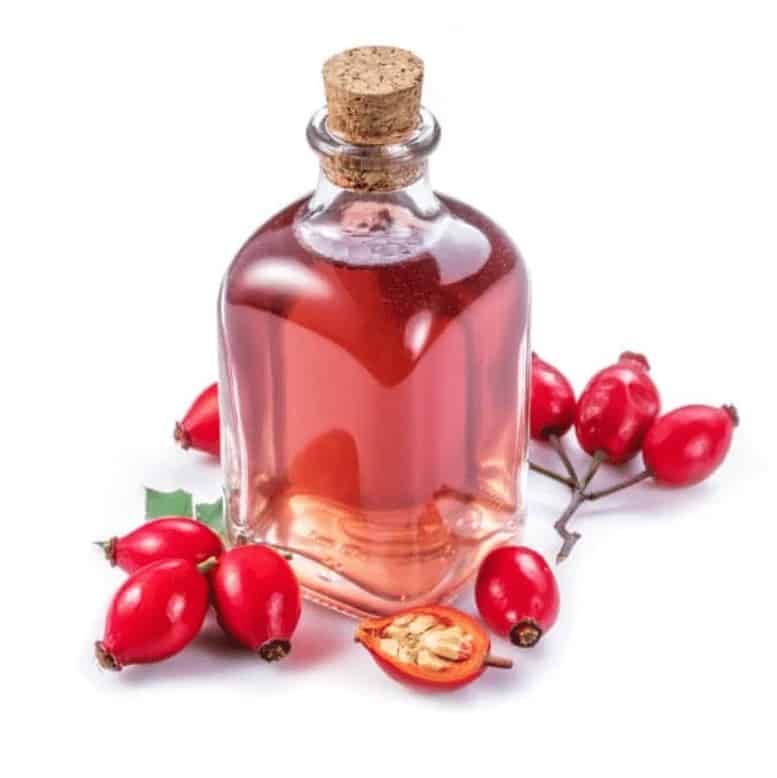
Rosehip Seed Oil
A staple anti-aging ingredient in natural cosmetics. With high levels of vitamins A (retinol), C, and E, it helps boost collagen formation, reduce hyperpigmentation, inflammation, scars, and fine lines, and protects from UV damage (to some extent, do not use rosehip seed oil as a sun blocker!). Also rich in essential fatty acids – oleic, palmitic, linoleic, gamma linolenic – it can do wonderful things for your face. This is a must-have ingredient for me in any facial lotion or facial treatment – I use it in my Homemade Eye Serum for Dark Circles recipe as well.
Pomegranate Seed Oil
Rich in several polyphenols, it helps reduce cellular damage in your body, by reducing free radicals damage, decreases inflammation, the incidence of age spots and wrinkles, and provides some natural protection from UV damage. Its high vitamin C content also helps to fight bacteria and fungus (helping with acne), due to its antimicrobial properties and reduces cellular damage as well.

Vitamin E Oil
All my skin care recipes, lotions included, uses 0.5% of vitamin E oil (tocopherol), contributing to its anti-oxidant and anti-inflammatory properties. Therefore, it also helps fighting free radicals and reducing UV damage. Combined with other oils’ Vitamin C content, it boosts the anti-oxidant properties of both vitamins C and E. I am sure that if you read about vitamin E and its benefits, you will be convinced to use it. Besides vitamin E helps to extend the shelf life of oils (again, as an anti-oxidant).
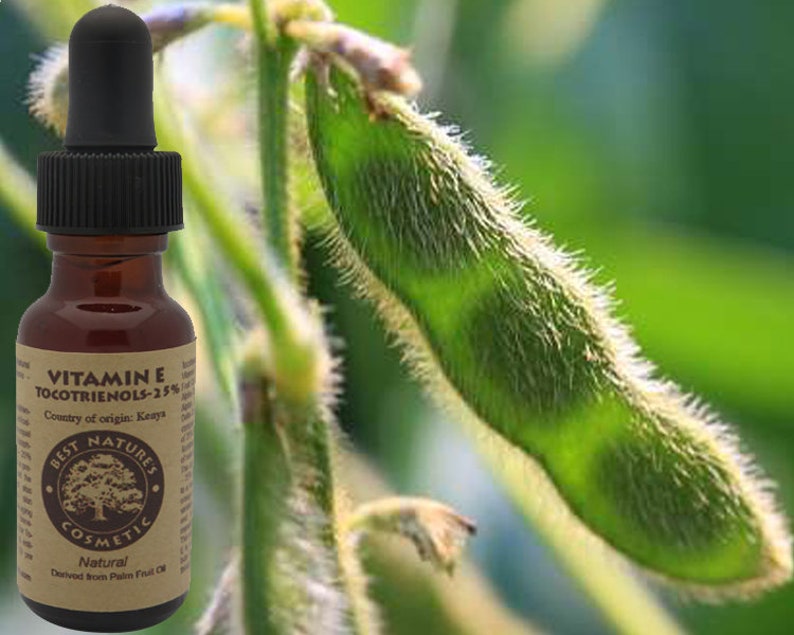
Horse Chestnut Extract
Horse chestnut extract is best known for treating varicose veins and other circulatory problems, like chronic venous insufficiency, due to its main active substance, aescin. This substance, along with flavonoids, also provide powerful anti-inflammatory and anti-oxidant properties. Aescin has been shown to inhibit hyaluronidase, an enzyme that can break down the hyaluronic acid found in skin. As skin uses this as a moisturizing component, a reduction in this enzyme can lead to an increase in skin hydration.
Essential Oils
I use them for scent, and that’s it. I’ve read enough literature about pros and cons of essential oils to be careful enough not to list all medicinal properties of essential oils, as it is not proven if and which ones are real. They do exist though and they may help with your skin care product.
They can also be skin irritants, so it’s sort of counterintuitive to advise to use them in good skincare products. Having said that, I use lavender, rose geranium and frankincense essential oils on most of my skin care. I use them because I’ve never had an issue with them, and I like the good, natural scents they provide. Lavender and frankincense are among the mildest essential oils for skin care.
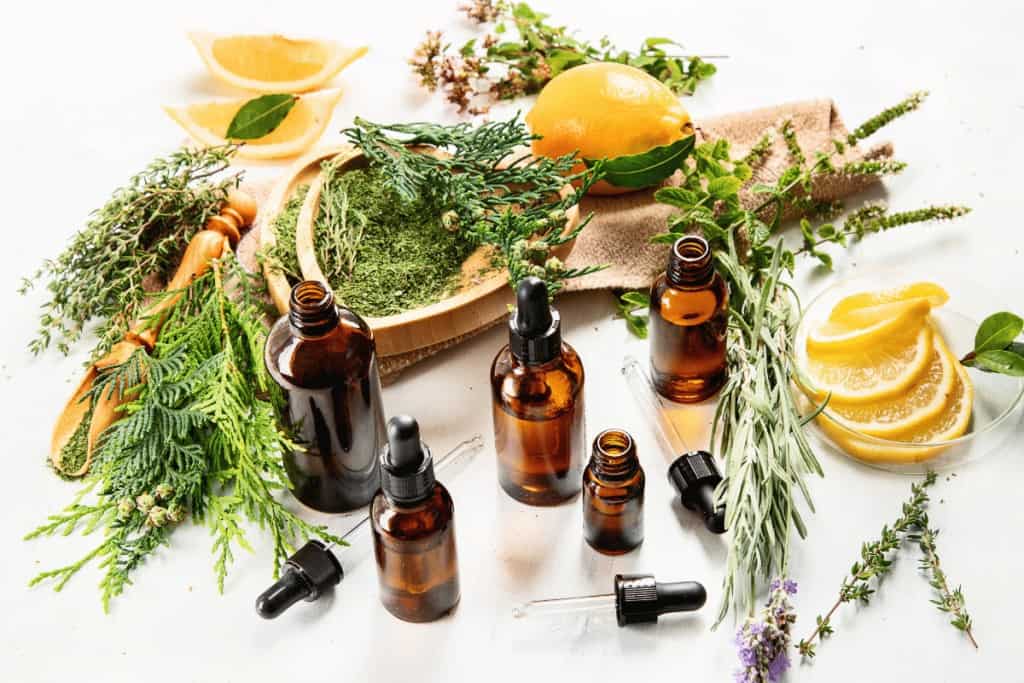
What Is The Use of Coenzyme Q10?
Coenzyme Q10, also known as CoQ10 or Ubiquinone, is a compound that our own body produces. It is crucial for cellular energy production and is present in every cell of your body. The highest concentrations are found in organs with the greatest energy demands, such as the heart, kidneys, lungs and liver.
One of the primary functions of CoQ10 is to help generate energy in your cells. It has a key role in aerobic energy production within the mitochrondria of your cells. Your body produces around 95% of its energy this way. Another crucial function is to serve as an antioxidant and protect cells from oxidative damage.
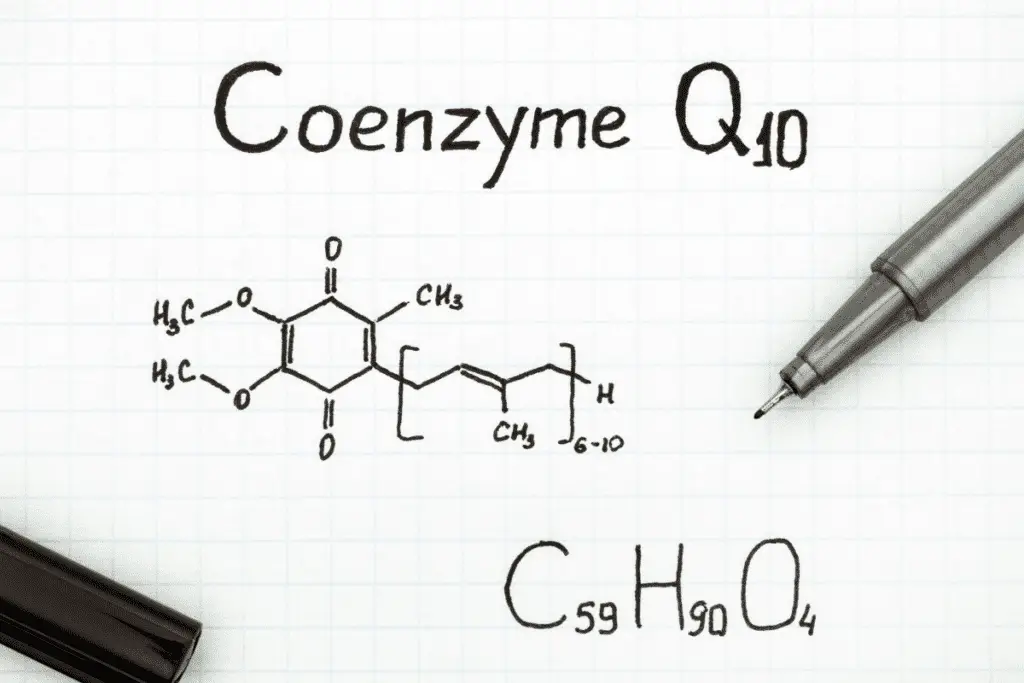
It acts as an lipid-soluble antioxidant, and it is the only one that our body produces and regenerates. It complements the antioxidant activity from vitamin E, which otherwise must rely on water-soluble agents such as ascorbate (vitamin C).
What Does CoQ10 Do For Your Skin?
Topical application of CoQ10 acts as:
- Antioxidant: it effectively helps fight free radicals, including the ones you get from sun exposure. Cells are able to clear themselves of damaging toxins
- Cell regeneration enhancer: With stimulated cell activity and energy production, skin cells repair and regenerate themselves faster and easier.
- Collagen and elastin production stimulant: by helping with the production of these two compounds, your skin gains elasticity, reducing wrinkles and fine lines.
- Dark spots prevention: it works to block tyrosinase, which helps with the production of melanin. This way, it can reduce or fade dark spots appearance.
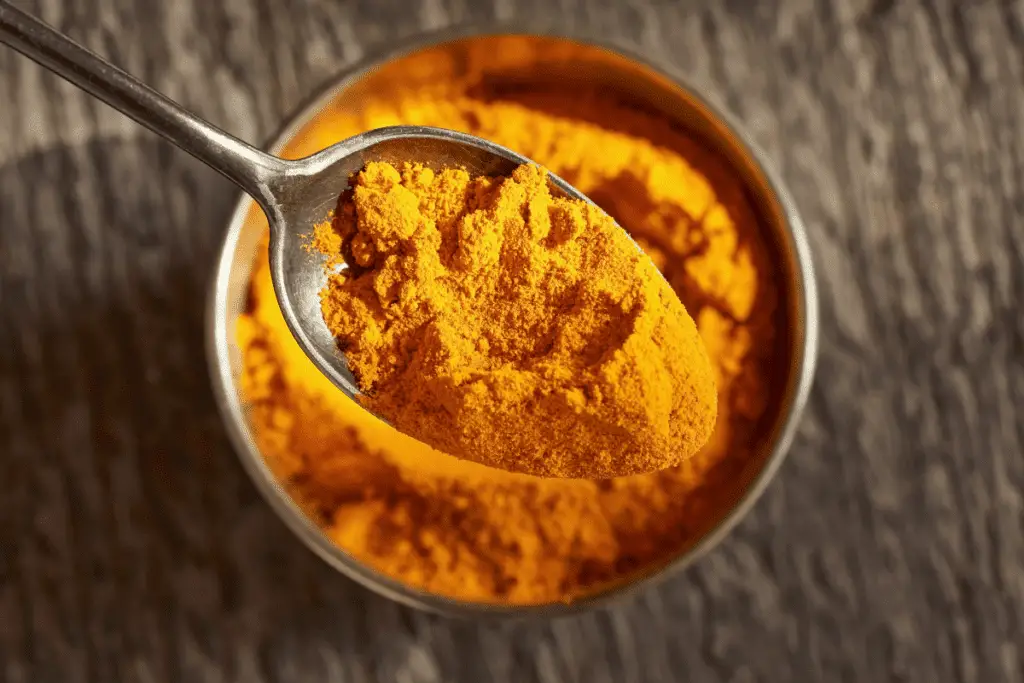
CoQ10 levels decrease with age or stress factors that most of the time we don’t control. Fortunately, CoQ10 can be replenished through supplements, food or even topical application.
A study shows that topical Q10 treatment is beneficial with regard to effective Q10 replenishment, augmentation of cellular energy metabolism, and antioxidant effects. Application of Q10‐containing formulas significantly increased the levels of this quinone on the skin surface.
Of course, moisturizing your skin and using humectants to keep the water in your skin are equally important.
What Ingredients Make a Skin Moisturizer?
Besides ingredients filled with anti-oxidants, and cell regenerators for age reducing effects, other ingredients can make your lotion more special or costumized for your skin type. Here are a few others:
Jojoba Oil
It’s actually a wax-like substance, extracted from the seeds of jojoba plants. It has powerful moisturizing properties, contains vitamin E and several minerals. This oil is very close to the natural oil produced by the skin so it makes a perfect moisturizer for all skin types. It absorbs easily into the skin and doesn’t clog pores.
Along with acne, it is very effective in the treatment of psoriasis, eczema, sunburn and chapped skin. Because it is the perfect moisturizer, jojoba oil can also help slow down the appearance of aging, and help to fade fine lines and wrinkles. It’s so mild that is adequate for any skin type. It’s a very good choice for oily skin, acne-prone skin or sensitive skin.
Aloe Vera
Aloe vera is a type of tropical cactus that’s been used to treat various skin ailments for thousands of years. Collect the gel from the plant leaves (here’s the procedure to colect aloe vera gel from the plant) and apply it directly on skin. The gel can treat sunburns and is a great non-greasy skin moisturizer. Due to its healing and moisturizing properties, aloe vera is widely used as an ingredient in a variety of skin care products.
Aloe vera is best used as a moisturizer for oily skin. But make a skin test first, as it may cause rashes or hives to certain sensitive skins.
Green Tea
Green tea is a drink with anti-oxidant properties, as it is common knowledge. But the same can be said about using it topically, for example, as the water in a lotion. Green tea is very rich with antioxidants and nutrients making it a great and very accessible ingredient for naatural beauty products. The major polyphenolic compound present in green tea, EGCG (epigallocatechin-3-gallate), was found to exhibit a wide range of therapeutic properties from a 2018 study.
There are many research studies that show that both drinking green tea and applying it topically can have benefits for your skin. Not only can green tea and green tea extract help with acne and help your skin look younger, but it also has the potential for helping to prevent melanoma and nonmelanoma skin cancers (from Healthline website). Green tea’s anti-inflammatory properties can help reduce skin irritation, skin redness, and swelling.
It’s a good choice for oily or acne-prone skin, or for any anti-aging lotion.
Oatmeal
Oatmeal is very often used to treat dry, itchy skin, or skin conditions that have these symptons like eczema or psoriasis. This is not exactly anecdotal knowledge. This article from MedicalNewsToday points to some studies showing oatmeal effectiveness at treating dry, itchy skin. One small study from 2015 showed that oatmeal contains anti-inflammatory and anti-oxidant properties that may explain the observed dermatological benefits of oatmeal.
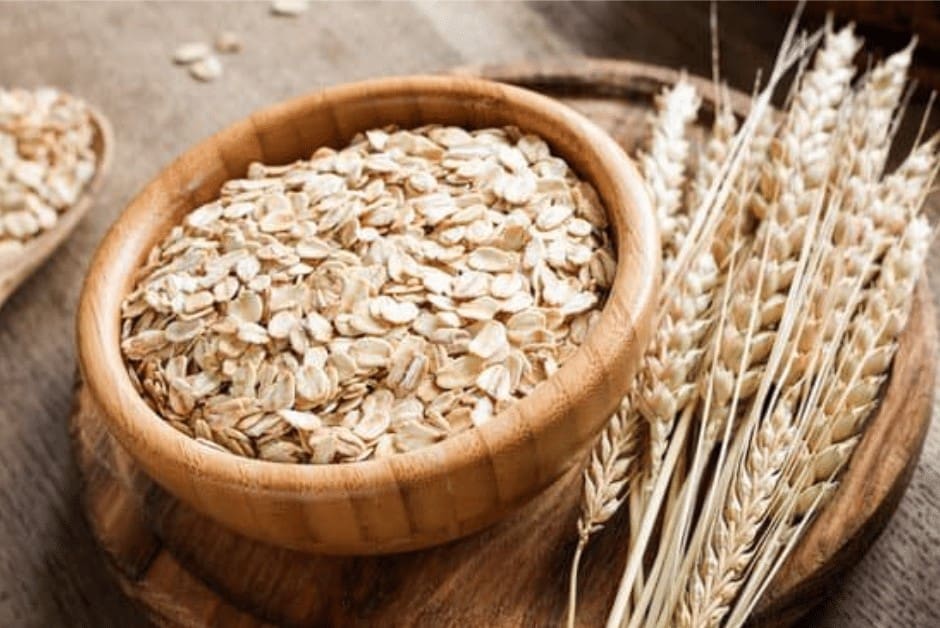
Still, each person reacts differently to the same sort of treatment. Some people develop allergy to oatmeal, so in that case, oatmeal only makes matters worse. But since colloidal oatmeal is cheap and a natural product, it’s always worth to try.
If you have a skin condition that causes itching or dry skin, and oatmeal is effective to calm these symptoms, you may want to consider to use oatmeal in your hygiene products. A sort of an oatmeal line: an unscented soap with oatmeal flour, an oatmeal lotion, cream or ointment, oatmeal face masks and soaking baths.
Now, it’s time for the juicy stuff: the actual face lotion recipes. But first, find below some very useful posts to make your lotion, including the emulsion tutorial guide, or video of how to make emulsions to give you some directions.
Related Posts
- Vegetable Oils: Natural Oils For Your Skin
- Essential Oils: Essential Oils for Skin Care Products
- How To Make Lotions – Emulsion Tutorial Guide: How To Make An Emulsion For Skincare
- More Skincare Recipes: Lotions and Creams Recipes Category
Watch This Video Before Starting Your Recipe

Simple Natural Face Lotion Recipe
This lotion is very simple, made with all natural ingredients. The oils used are fancy, skin-loving ingredients: rosehip seed oil, great as an anti-aging; jojoba oil, very mild and adequate for all skin types. If you want to use a more common vegetable oil for your lotion, use sweet almond oil instead of rosehip and jojoba oil. It will also make your lotion cheaper.
The remaining list of ingredients consists of rose water, the must-have emulsifying wax and preservative, vitamin E oil that works as an anti-oxidant for the oils, but also as a cosmetic anti-oxidant in itself, and he essential oils that provide a nice natural aroma, as well as some plant properties.
My Own Experience
This homemade face lotion recipe was a fantastic surprise. It was the first face lotion I’ve made for myself. The final result was a whitish thin cream, very similar to what commercial lotions look like. Depending on the rose water you use and its native color, your cream might have a pinkish or creamy color or even a light brown one. The lotion is high quality, this is just the result of the rose petals color and how natural ingredients interact with each other. If you wish to have a pure white color, use distilled water.
The lotion leaves my face moisturized for longer than commercial creams. My skin is also less oily. How’s that you ask?
I have combination skin, with the “T” zone oilier and my jaw and cheeks zone prone to be very dry. I always found this zone very oily at the end of the day. Since the lotion is actually moisturizing, and the remaining products are not overdrying, my skin doesn’t trigger sebum production so often, leaving it “cleaner” for longer, more balanced.
In the end, this lotion is less expensive and I feel more moisturized, less “greasy” and happier in general.
Equipment
Ingredients
Oil Phase
- 7 g jojoba oil or sweet almond oil
- 3 g rosehip seed oil
- 4 g emulsifying wax NF
Water Phase
- 35 g rose petals water infusion or rose water
Cooling Phase
- 0,25 ml essential oil rose geranium (optional)
- 0,25 ml essential oil frankincense or essential oil rose geranium (optional)
- 0,25 ml vitamin E oil (tocopherol)
- 0,25 g Liquid Germall Plus Euxyl k940
Instructions
Preparations
- Learn the basics of making lotions in How To Make An Emulsion For Skincare or watch the video above. They don't have a recipe, but show generic steps of how to make a lotion (emulsion).
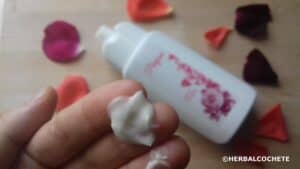
- Disinfect all your equipment before starting. You can boil some of your equipment (like the double boiler, glass cups, spoons), and use a solution of 1 liter of water with 1/2 cup of bleach, for items that are not heat-resistant (like the milk frother, plastic cups or the lotion containers)
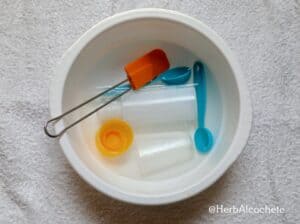
- Make a rose-petals infused water at home in advance. Learn how in: Homemade Natural Face Toner with Rose Petals. Use distilled water only in it.
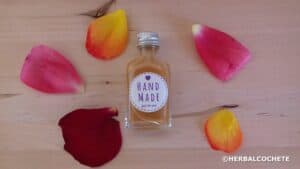
Water Phase
- Measure all the water phase ingredients – rose-infused water – into a cup
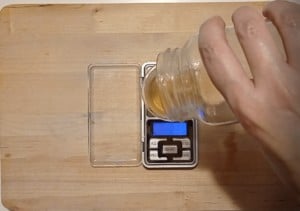
- Heat the water ingredients in low heat to around 60ºC. You can use the microwave but the best is to heat in bagne-marie. Do not let the water boil.
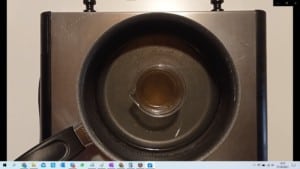
Oil Phase
- Measure all oil ingredients into the double boiler. You may replace rosehip seed oil by pomegranate seed oil another great anti-aging oil. In this case, add the pomegranate seed oil to the cooling ingredients and avoid to heat this oil.
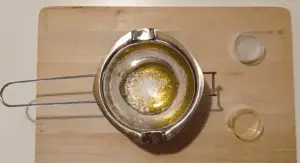
- Place the double boiler over a pan with water (bagne-marie) and heat the oils and emulsifying wax in low heat until the wax melts
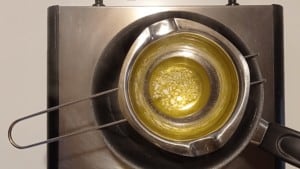
Cooling Phase
- Measure all cooling phase ingredients into a small cup.
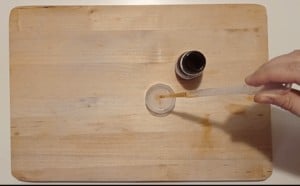
- The essential oils are optional, and you can use just one of them, simply adjust the quantity. Vitamin E will enrich your lotion with an anti-oxidant, and is also optional. The preservative is not optional. Use the quantities as per manufacturer instructions. I use Euxyl k940 at 1% (0,5 ml).
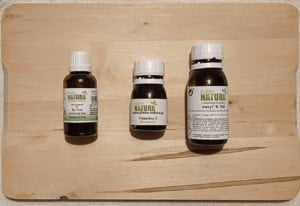
Making your Lotion
- Measure the temperature of both the water and the oils. Make sure the rose-infused water is at a higher temperature than the oils.

- Pour the water into the oils. The mixture will immediately turn milky.
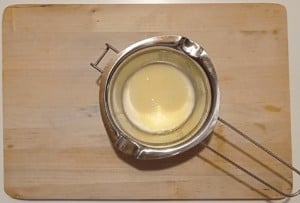
- Blend the mixture well with a milk frother. If you find lumps in the mixture, heat it a little more (on low heat), and use the milk frother to dissolve the lumps.
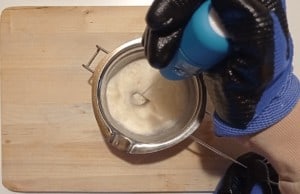
- The mixture will become creamy but runny.
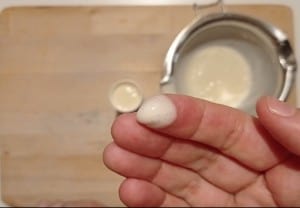
- Wait till the mixture is around 50ºC or a little lower (122ºF). Then pour the cooling phase ingredients and mix well with a spoon or the milk frother.

Finishing your Lotion
- It's time to measure your lotion pH. It should be around 5.5 (5-6). Add one teaspoon of citric acid dissolved in water (you can also use lemon juice) if pH is too high, or a teaspoon of baking soda dissolved in water if pH is too low. Add as many teaspoon as needed but one or two should be enough.
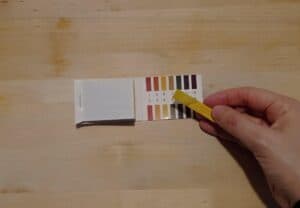
- Pour your lotion into an airless pump bottle. You can also use a tin container, but the pump bottle protects your lotion against oxidation, dirt contamination or getting in contact with your fingers.
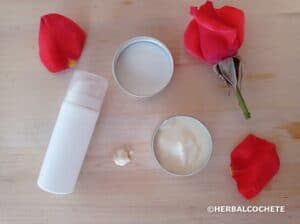
Video
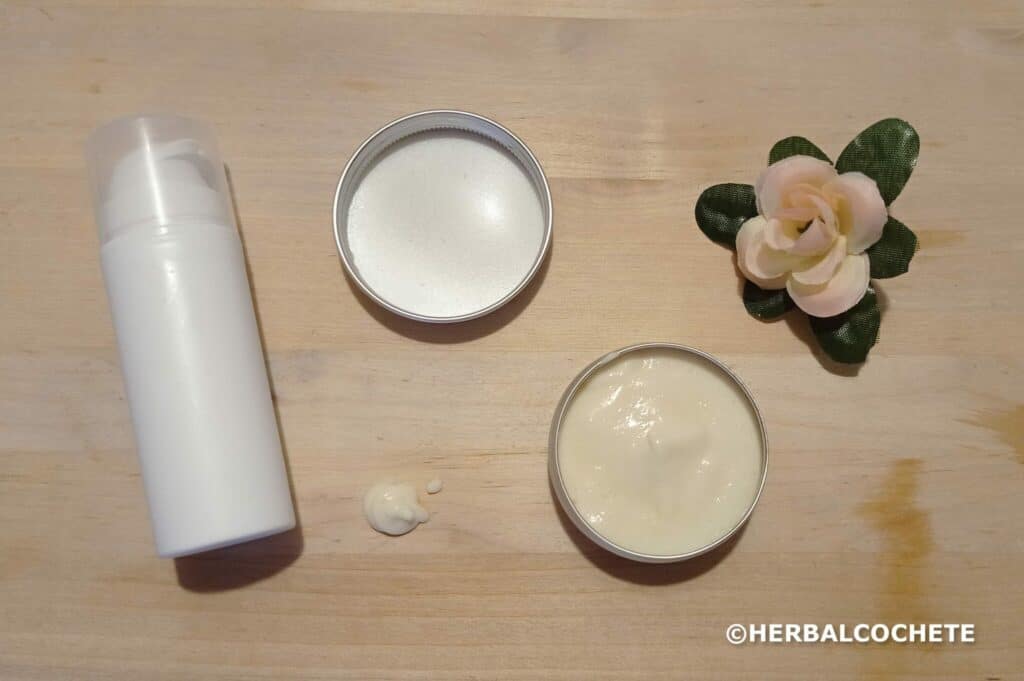
Simple Anti-Aging Face Lotion Recipe
Try this anti-aging face lotion recipe, packed with natural ingredients rich in anti-aging agents such as retinol, naturally present in rosehip seed oil, polyphenols and peptides, naturally present in pomegranate seed oil, flavonoids and other powerful anti-oxidants, present in horse-chestnut extract and vitamin E oil. Rose water oils and extracts are aimed at helping with wrinkles and mature, aging skin. The recipe also uses an emulsifying wax, a preservative and essential oils for scent.
My Own Experience
This face lotion recipe is basically an enriched anti-aging version of the previous lotion recipe. I don’t really have a long experience with it, as I’ve switched fast to the next recipe with Q10 as my usual anti-aging lotion.
But I can garantee that this lotion leaves your skin hydrated and soothed for longer than commercial lotions, as explained in the previous lotion recipe experience. I’ve been using most of its ingredients in my other lotions and I can observe that my skin is smooth and with only a couple of wrinkle lines, normal at my age 🙂
Equipment
Ingredients
Oil Phase
Water Phase
- 33 g rose petals water infusion or rose water
- 2 g horse-chestnut extract
Cooling Phase
- 0,5 ml essential oil rose geranium (optional)
- 0,25 ml vitamin E oil (tocopherol)
- 0,25 g Liquid Germall Plus Euxyl k940
Instructions
Preparations
- Learn the basics of making lotions in How To Make An Emulsion For Skincare or watch the video above. They don't have a recipe, but show generic steps of how to make a lotion (emulsion).

- Disinfect all your equipment before starting. You can boil some of your equipment (like the double boiler, glass cups, spoons), and use a solution of 1 liter of water with 1/2 cup of bleach, for items that are not heat-resistant (like the milk frother, plastic cups or the lotion containers)

- Make a rose-petals infused water at home in advance. Learn how in: Homemade Natural Face Toner with Rose Petals. Use distilled water only in it.

Water Phase
- Measure all the water phase ingredients (rose water and horse chestnut extract) into a cup

- Heat the water ingredients in low heat to around 50ºC – 122ºF. You can use the microwave but the best is to heat in bagne-marie. Do not let the water boil.

Oil Phase
- Measure all oil ingredients (rosehip seed oil and pomegranate seed oil) into the double boiler

- Place the double boiler over a pan with water (bagne-marie) and heat the oils and emulsifying wax in low heat (< 50ºC – 122ºF) until the wax melts.

Cooling Phase
- Measure all cooling phase ingredients into a small cup.

- The essential oils are optional, and you can use just one of them, simply adjust the quantity. Vitamin E will enrich your lotion with an anti-oxidant, and is also optional. The preservative is not optional. Use the quantities as per manufacturer instructions. I use Euxyl k940 at 1% (0,5 ml).

Making your Lotion
- Measure the temperature of both the water and the oils. Make sure the rose-infused water is at a higher temperature than the oils.

- Pour the water into the oils. The mixture will immediately turn milky.

- Blend the mixture well with a milk frother. If you find lumps in the mixture, heat it a little more (on low heat), and use the milk frother to dissolve the lumps.

- The mixture will become creamy but runny.

- Wait till the mixture is around 50ºC or a little lower (122ºF). Then pour the cooling phase ingredients and mix well with a spoon or the milk frother.

Finishing your Lotion
- It's time to measure your lotion pH. It should be around 5.5 (5-6). Add one teaspoon of citric acid dissolved in water (you can also use lemon juice) if pH is too high, or a teaspoon of baking soda dissolved in water if pH is too low. Add as many teaspoon as needed but one or two should be enough.

- Pour your lotion into an airless pump bottle. You can also use a tin container, but the pump bottle protects your lotion against oxidation, dirt contamination or getting in contact with your fingers.
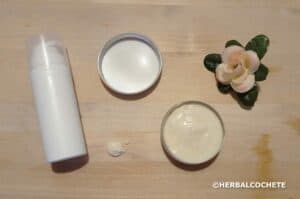
Video
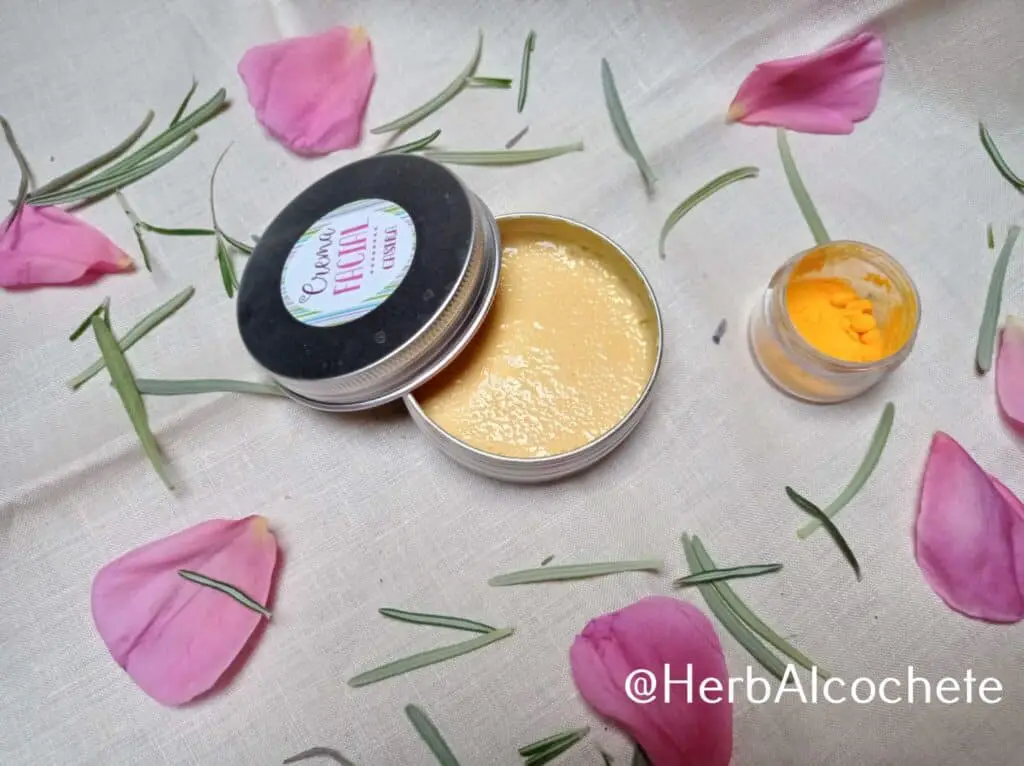
Wrinkle Face Lotion Recipe With CoQ10
CoQ10 is the main special ingredient for this lotion recipe. It also contains a richer oil mixture, with jojoba oil, sweet almond oil and rosehip seed oil. Water content as been replaced with natural aloe vera gel, taken directly from the plant leaves. This makes this lotion a rather moisturizing one.
The rest of the ingredients are similar to the other lotions: emulsifying wax, the preservative, rose geranium essential oil and vitamin E oil.
My Own Experience
I’ve used this face lotion recipe for more than one year, and I’ve been happy with it. Sometimes, I add lavender essential oil to it instead of rose geranium as I love lavender scent. I also replace distilled water for aloe vera, with little differences to be honest.
One thing I really like about making my own cosmetics is to know how much of each ingredient I am using on a daily basis. I use around 1,5% of CoQ10 in my face lotion. That’s 0,75g in a 50 ml lotion. CoQ10 is expensive, and 0,75g actually means almost 1/2 tsp – I suppose it’s a very light powder.
But I really doubt that any store-bought lotion, costing 10 times what mine costs, does have this quantity of CoQ10 in it. I’ve been quite happy with using CoQ10 in my face lotion, I do believe it makes a difference, as my skin feels “tighter” in a good way (not the tightening from being dry, but from being more elastic).
However, I’ve also changed a bit the formulas. Maybe the secret is to keep changing ingredients as you will always be giving your skin different nutrients in different amounts. The very same rationale you use for a healthy diet.
Equipment
Ingredients
Oil Phase
- 5 g jojoba oil
- 5 g sweet almond oil
- 4 g emulsifying wax NF
Water Phase
- 36 g distilled water
Cooling Phase
- 3 g rosehip seed oil pomegranate seed oil
- 0,75 g coenzime Q10
- 0,5 ml essential oil frankincense (optional)
- 0,25 ml vitamin E oil (tocopherol)
- 0,25 g Liquid Germall Plus Euxyl k940
Instructions
Preparations
- Learn the basics of making lotions in How To Make An Emulsion For Skincare or watch the video above. They don't have a recipe, but show generic steps of how to make a lotion (emulsion).

- Disinfect all your equipment before starting. You can boil some of your equipment (like the double boiler, glass cups, spoons), and use a solution of 1 liter of water with 1/2 cup of bleach, for items that are not heat-resistant (like the milk frother, plastic cups or the lotion containers)

Water Phase
- Measure the water phase ingredients (distilled water) into a cup
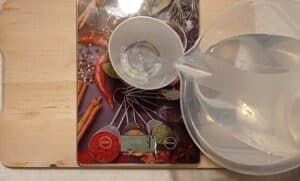
- Heat the water ingredients in low heat to around 60ºC. You can use the microwave but the best is to heat in bagne-marie, while controlling temperature. No need to let the water boil, you will have to wait to cool down.

Oil Phase
- Measure all oil ingredients (the oils and the emulsifying wax) into the double boiler

- Place the double boiler over a pan with water (bagne-marie) and heat the oils and emulsifying wax in low heat until the wax melts

Cooling Phase
- Measure all cooling phase ingredients into a small cup. Mix the coenzyme Q10 with the liquid ingredients.
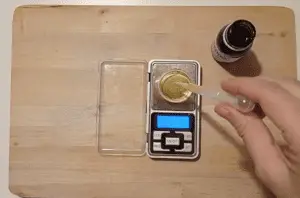
- The preservative is not an optional ingredient. Use the quantities as per manufacturer instructions. I use Euxyl k940 at 1% (0,5 ml).

Making your Lotion
- Measure the temperature of both the water and the oils. Make sure the water is at a higher temperature than the oils.
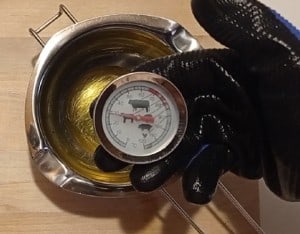
- Pour the water into the oils. The mixture will immediately turn milky.

- Blend the mixture well with a milk frother. If you find lumps in the mixture, heat it a little more (on low heat), and use the milk frother to dissolve the lumps.

- The mixture will become creamy but runny.

- Wait till the mixture is around 50ºC or a little lower (122ºF). Then pour the cooling phase ingredients and mix well with a spoon or the milk frother.

Finishing your Lotion
- It's time to measure your lotion pH. It should be around 5.5 (5-6). Add one teaspoon of citric acid dissolved in water (you can also use lemon juice) if pH is too high, or a teaspoon of baking soda dissolved in water if pH is too low. One teaspoon should be enough.

- The coenzyme Q10 has an dark yellow/orange color, coloring your lotion with the same color.
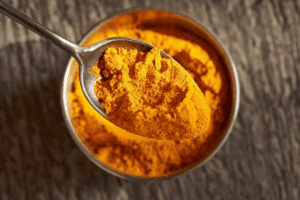
- Pour your lotion into an airless pump bottle. You can also use a tin container, but the pump bottle protects your lotion against oxidation, dirt contamination or getting in contact with your fingers.
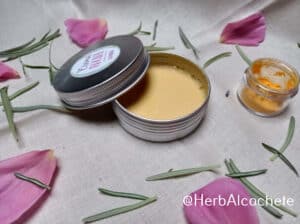
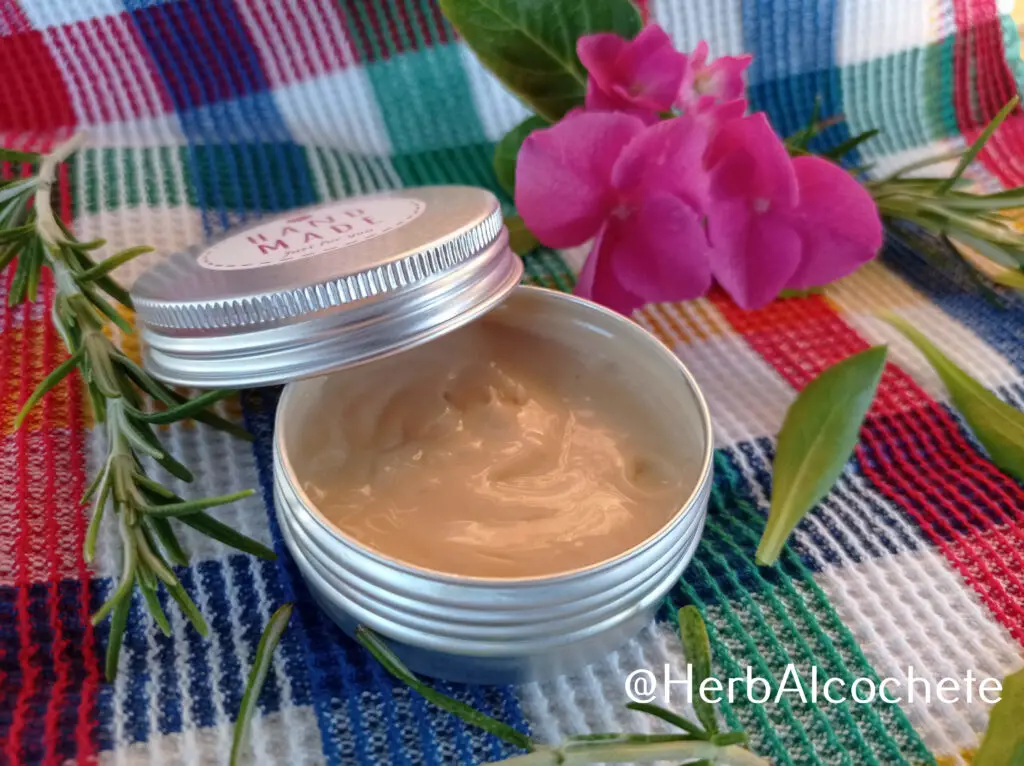
Oat Face Lotion Recipe
This oat face lotion recipe brings a homemade lotion for you with a silky, velvety feeling, moisturizing and soothing properties. It’s a very mild and soft, soothing face lotion, enriched with colloidal oat, that may even be adequate for sensitive skin or skin with conditions. Otherwise it’s adequate for any skin type.
Along with oat flour, it contains the same oil mixture as the previous recipe with CoQ10, with jojoba oil, sweet almond oil and rosehip seed oil. Green tea or green tea water infusion makes for the water content. A great anti-oxidant I had easily at home and was yet to use in my skin care recipes (I’m ashamed…). Horse chestnut extract joins the trio of anti-aging ingredients for this lotion, along with rosehip seed oil and green tea. And this time I’ve actually listed lavender essential oil as part of a face lotion, after using it so many times in my own lotions. It’s the mildest essential oil, more adequate for sensitive skin.
Pro-Tips
This face lotion recipe can be slightly changed to adapt to your needs. Whether you want it to make it cheaper, more adequate to your skin type/condition, or simply load it more in more expensive, noble ingredients.
For sensitive skin, for example, no extra care is too much. A deeper analysis to the ingredients list should always be made, to check if you can tolerate or not this lotion on your skin. This is actually valid for any skincare product. If in doubt, make a skin patch test to each individual ingredient.
My advice is to use products with smaller lists of ingredients. In this recipe, sweet almond oil makes this lotion a bit less expensive, but if you have sensitive skin or a nut allergy, you may switch the 5g of oil content to 100% jojoba oil or argan oil.
They are equally moisturizing, but lighter and milder as they have a similar fatty acid profile to human sebum, therefore, more similar to your skin natural oil. Rosehip seed oil is usually well tolerated by most skin types, but you can skip it as well. If green tea is a problem to your sensitive skin, use distilled water instead. Essential oils may be skipped as well.
My Own Experience
This is the lotion I currently use. Compared with the other recipes the only noticeable difference is the lotion texture, slightly thicker and silkier or more velvety. As for long term effects, it’s still under testing 🙂 As a first impression, I really like it and I think I’ll be using oat on other skin products. For example, the face soap with oat and shea butter is great, very smooth and creamier than most I’ve done before. And the scent is wonderful!
Equipment
Ingredients
Oil Phase
- 2 g jojoba oil
- 5 g sweet almond oil
- 4 g emulsifying wax NF
Water Phase
- 30 g green tea infused water distilled water
- 3 g horse-chestnut extract
Cooling Phase
- 3 g rosehip seed oil pomegranate seed oil
- 3 g colloidal oat powder
- 0,5 ml essential oil lavender (optional)
- 0,25 ml vitamin E oil (tocopherol)
- 0,25 g Liquid Germall Plus Euxyl k940
Instructions
Preparations
- Learn the basics of making lotions in How To Make An Emulsion For Skincare or watch the video above. They don't have a recipe, but show generic steps of how to make a lotion (emulsion).

- Disinfect all your equipment before starting. You can boil some of your equipment (like the double boiler, glass cups, spoons), and use a solution of 1 liter of water with 1/2 cup of bleach, for items that are not heat-resistant (like the milk frother, plastic cups or the lotion containers)

- Make the water infusion with green tea (2/3 of a cup of leaves or 3 tea bags for 1 cup of water), if you are using the herbal water infusion. Learn how in: Homemade Natural Face Toner with Rose Petals. Use distilled water only in it and replace the rose petals with green tea..
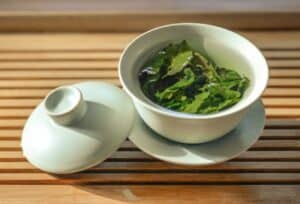
Water Phase
- Measure the water phase ingredients into a cup.
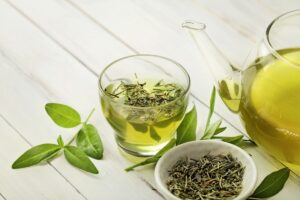
- Heat the water ingredients in low heat to around 60ºC. No need to let the water boil, you will have to wait to cool down. You can benefit from the heat of making the water infusion.

Oil Phase
- Measure all oil ingredients (the oils and the emulsifying wax) into the double boiler

- Place the double boiler over a pan with water (bagne-marie) and heat the oils and emulsifying wax in low heat until the wax melts

Cooling Phase
- Measure all cooling phase ingredients into a small cup. Mix the colloidal oat powder with the liquid ingredients. Avoid lumps.

- The preservative is not an optional ingredient. Use the quantities as per manufacturer instructions. I use Euxyl k940 at 1% (0,5 ml for 50ml of lotion).

Making your Lotion
- Measure the temperature of both the water and the oils. Make sure the water is at a higher temperature than the oils. If needed, reheat the water a bit.

- Pour the water into the oils. The mixture will immediately turn milky. Distilled water will turn the lotion into a white color. Herbal infusion will give a cream/brown color to the lotion.

- Blend the mixture well with a milk frother. If you find lumps in the mixture (bits of wax, for example), heat it a little more (on low heat), and use the milk frother to dissolve the lumps.

- The mixture will become creamy but still runny.

- Wait till the mixture is around 50ºC or a little lower (122ºF). Then pour the cooling phase ingredients and mix well with a spoon or the milk frother.

Finishing your Lotion
- It's time to measure your lotion pH. It should be around 5.5 (5-6). Add one teaspoon of citric acid dissolved in water (you can also use lemon juice) if pH is too high, or a teaspoon of baking soda dissolved in water if pH is too low. One teaspoon should be enough.

- Pour your lotion into an airless pump bottle. You can also use a tin container, but the pump bottle protects your lotion against oxidation, dirt contamination or getting in contact with your fingers. This lotion feels very silky due to the oat powder.

Video
Find Where To Buy Natural Face Lotions
You’re not yet ready to try to make any of these face lotion recipes at home? DIY is really not yout thing but you still loved to read about lotions with natural ingredients? And now you wish to enjoy a natural face lotion? You can find alternatives at the following links:
- Etsy Organic Face Cream – BeijaTerra
- Absolute You Day Cream – We Solve Skin
- Time Rewind Eye and Facial Balm with Coenzyme Q10 – Etsy
- Vitamin C Face Oil with Coenzyme Q10 – Etsy
- Oat Dream Cream – Etsy
- Unscented Soothing Oat Cream – Etsy
- Awake Morning Firming Facial Moisture – Blissoma
- Facial Lotions – Etsy
